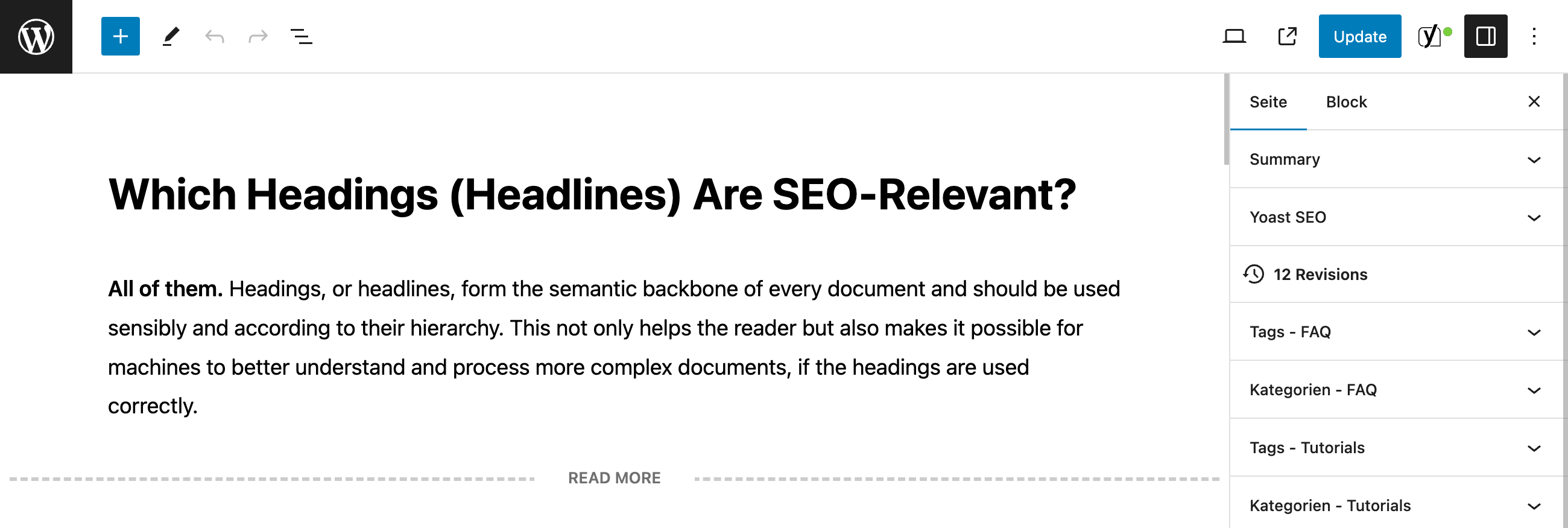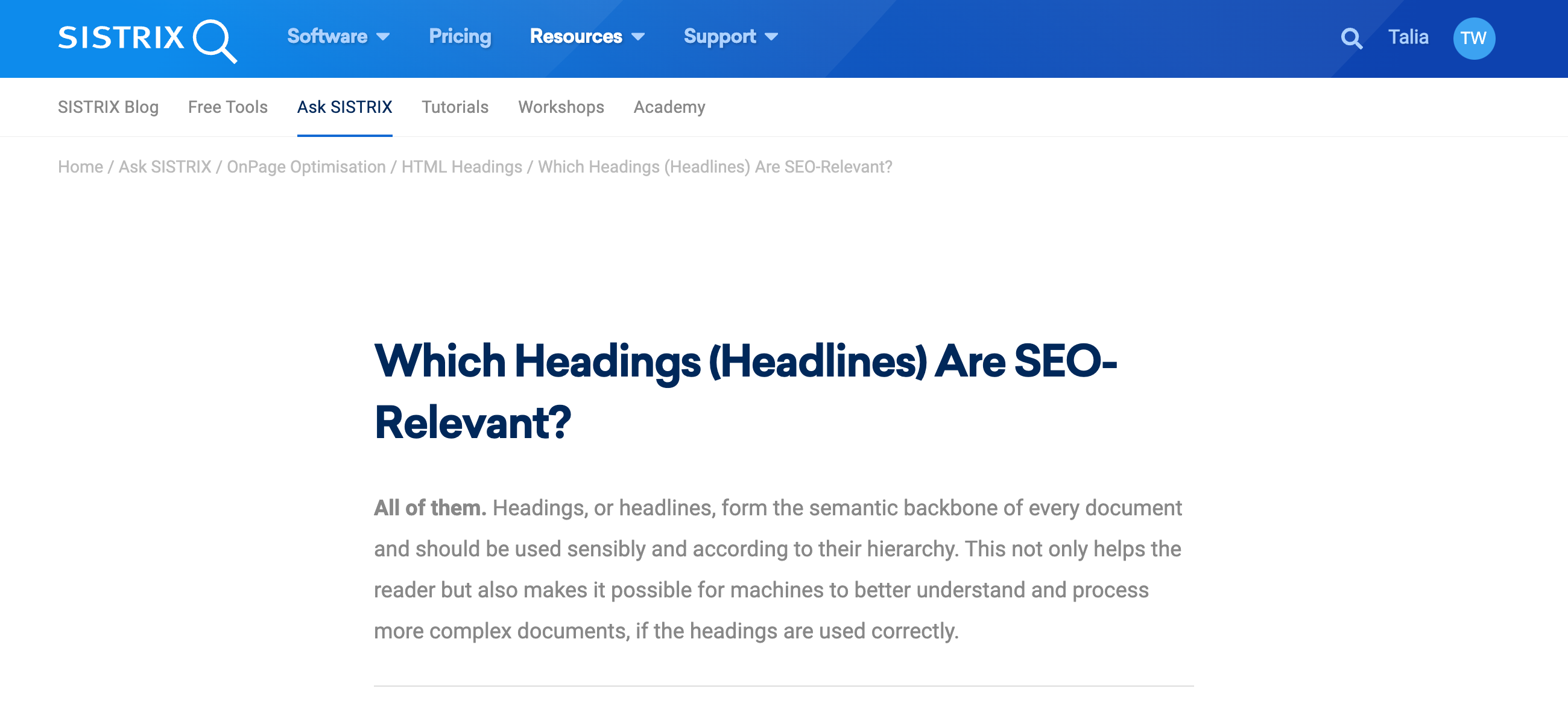All of them. Headings, or headlines, form the semantic backbone of every document and should be used sensibly and according to their hierarchy. This not only helps the reader but also makes it possible for machines to better understand and process more complex documents, if the headings are used correctly.
Another advantage that speaks for the correct use of headings is user behaviour. Many users first skim a document by simply “scanning” the headings. So if an article has multiple headings, arranged in a sensible fashion, it becomes easier for the reader to assess its content. This also holds true for machines, like the GoogleBot. Let’s take a look at what this means for SEO.
HTML specification for headings according to W3C
This is the hierarchy for headings within a document. There is only one H1 heading:
<h1>Headline with the topic of the document </h1>
<h2>Introduction</h2>
<h2>Advantages</h2>
<h3>A detailed look at an advantage </h3>
<h2>Conclusion</h2>A heading element briefly describes the topic of the section it introduces.
There are six levels of headings in HTML, with H1 as the most important and H6 as the least. Visual browsers usually render more important headings in larger fonts than less important ones.
http://www.w3.org/TR/html4/struct/global.html#h-7.5.5
Should the keyword be included in the headings?
Yes. But not out of hope for a better ranking on the search result pages.
The keyword that best describes the topic of the document should be in the headline, for the user. For this, it makes sense to add the keyword to the H1 heading, if possible, even at the very beginning of it.
What do I have to keep in mind when using headings?
In many content management systems (CMS), the “title” of an article is also the first H1 heading of the document.

Additionally, the title of an article is used by many content management systems as the page title for the document.

That is why it also appears in the search result pages in this form. Social media platforms like Facebook use and display the page title as a preview for the website they link to.
The title element is a strong ranking factor and should therefore have the keyword, for which the page (URL) is supposed to rank well, as its first word.
So how do I write a good SEO heading?
The same way that you would write a good SEO text. Which is not at all.
Don’t think in terms of SEO texts or SEO headings. Use headings that help your users and try to keep all the possible questions in mind, that the topic or product of your page might entail.
There are also a few helpful tips that can send you on your way to great heading design. Jakob Nielsen, a usability expert and author, advises setting up a headline according to these characteristics:
- short and concise, 5 words or less
- high information content
- begins with the keyword
- makes sense and is understandable even without having read the article
- is predictable / fits the reader’s expectations
David Ogilvy was probably the world’s most prominent writer of advertisement copy. He once said:
On average, five times as many people read the headline as read the body copy. When you have written your headline, you have spent 80 cents out of your dollar.
– David Ogilvy
Should I use multiple headings on a page?
Sure, if you offer enough content on your page and your headline hierarchy makes it easier for a user to comprehend the article. Ideally, you will only use one H1 heading per document. Please do not try to use multiple headings on a page just for the sake of having multiple headings on the page. Headings are not about quantity – what matters here is relevancy and how useful they are.